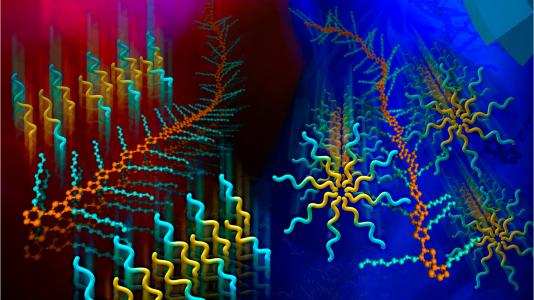
This press release was originally printed by Oak Ridge National Laboratory.
The efficiency of solar cells depends on precise engineering of polymers that assemble into films 1,000 times thinner than a human hair.
Today, formation of that polymer assembly requires solvents that can harm the environment, but scientists at the Department of Energy’s Oak Ridge National Laboratory have found a “greener” way to control the assembly of photovoltaic polymers in water using a surfactant— a detergent-like molecule—as a template. Their findings are reported in Nanoscale, a journal of the Royal Society of Chemistry.
“Self-assembly of polymers using surfactants provides huge potential in fabricating nanostructures with molecular-level controllability,” said senior author Changwoo Do, a researcher at ORNL’s Spallation Neutron Source.
The researchers used three DOE Office of Science User Facilities—the Center for Nanophase Materials Sciences and SNS at ORNL and the Advanced Photon Source at Argonne National Laboratory—to synthesize and characterize the polymers.
“Scattering of neutrons and X-rays is a perfect method to investigate these structures,” said Do.
The study demonstrates the value of tracking molecular dynamics with both neutrons and optical probes.
“We would like to create very specific polymer stacking in solution and translate that into thin films where flawless, defect-free polymer assemblies would enable fast transport of electric charges for photovoltaic applications,” said Ilia Ivanov, a researcher at CNMS and a corresponding author with Do. “We demonstrated that this can be accomplished through understanding of kinetic and thermodynamic mechanisms controlling the polymer aggregation.”
The accomplishment creates molecular building blocks for the design of optoelectronic and sensory materials. It entailed design of a semiconducting polymer with a hydrophobic (“water-fearing”) backbone and hydrophilic (“water-loving”) side chains. The water-soluble side-chains could allow “green” processing if the effort produced a polymer that could self-assemble into an organic photovoltaic material.
The title of the Nanoscale paper is “Controlling molecular ordering in solution-state conjugated polymers.”